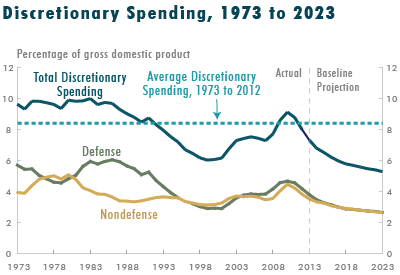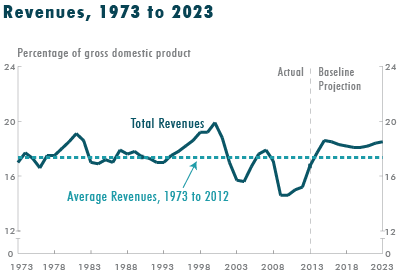In 2012, the federal government spent $531 billion on investment—for physical capital; research and development; and education and training—which represented 15 percent of federal spending and 3 percent of GDP.
CBO Blog
Spending on the Social Security program will exceed its dedicated tax revenues, on average, by about 12 percent over the next decade, CBO projects. The gap will grow larger in the 2020s and will exceed 30 percent of revenues by 2030.
CBO examined 28 options that encompass a broad range of discretionary programs. About a third of the options would affect defense programs; the rest are for nondefense programs.
CBO examined 36 options related to the following parts of the tax system: individual income tax rates, the individual income tax base, individual income tax credits, payroll taxes, and taxation of income from businesses, among others.
To comply with the Budget Control Act, the DoD budget would have to be as much as 20 percent below the cost of its current plans. Such a reduction could be achieved through different approaches, some involving cutbacks in combat units.
The federal government ran a budget deficit of $231 billion for the first two months of fiscal year 2014, $61 billion less than the shortfall recorded in October and November of last year, CBO estimates.
The 23 options related to mandatory spending would generally decrease the amount paid to beneficiaries, redefine the population that is entitled to benefits of various programs, or reduce payments to state and local governments.
Earlier this week, Director Doug Elmendorf participated in a conference on the budget organized by the Rudman Center at the University of New Hampshire.
Most of the 16 options that CBO examined would either decrease federal spending on health programs or increase revenues (or equivalently, reduce tax expenditures) as a result of changes in tax provisions related to health care.
Users of our website will now be able to search for options according to major budget category (such as revenues), budget function (such as national defense or transportation), and major program category (such as housing or Medicare).










